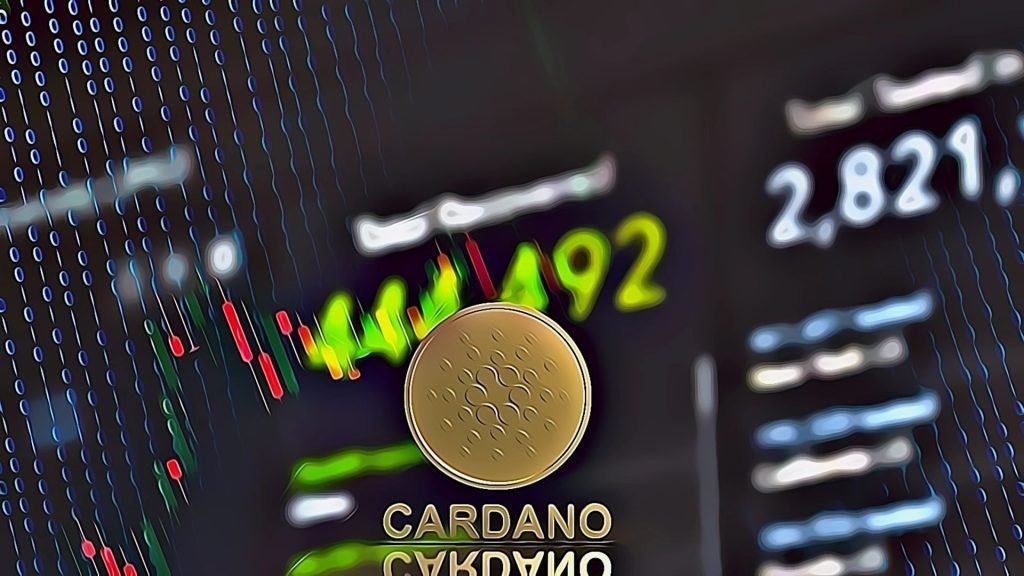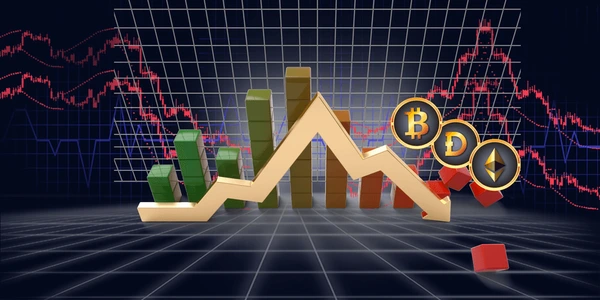The Cryptocurrency ranking market is highly dynamic, with rankings shifting due to price fluctuations, adoption, and technological advancements. In 2024, some cryptocurrencies continue to dominate, while new contenders rise in the rankings.
This article explores the top-ranked cryptocurrencies in 2024, factors influencing rankings, and their investment potential.
Key Takeaways
Cryptocurrency ranking are based on market cap, trading volume, adoption, and technology.
High-ranking cryptos like Bitcoin, Ethereum, and Binance Coin offer stability and liquidity.
Lower-ranked cryptos can be risky but may provide growth opportunities.
Rankings change frequently, so investors should analyze long-term potential.
Using rankings along with research helps make better investment decisions.
How Are Cryptocurrencies Ranked?
Cryptocurrency rankings are based on several key factors:
- Market Capitalization – The total value of a cryptocurrency (price × circulating supply).
- Trading Volume – The amount of a cryptocurrency traded within a specific period.
- Adoption & Use Cases – Real-world applications and institutional adoption.
- Technology & Security – Network scalability, security, and innovation.
- Regulatory Compliance – Government regulations affecting legitimacy and growth.
- Community & Developer Activity – Active contributions and community support.
Now, let’s look at the highest-ranked cryptocurrencies in 2024.
Top 10 Cryptocurrency ranking by Market Ranking in 2024
Bitcoin (BTC) – The King of Crypto
- Market Cap: ~$1.2 trillion
- Price (March 2024): ~$60,000+
- Key Features:
- First and most widely accepted cryptocurrency.
- Store of value (digital gold).
- Growing institutional adoption (ETFs, corporate investments).
Bitcoin remains the most dominant Cryptocurrency ranking, with its ranking driven by strong demand and increasing mainstream acceptance.
Ethereum (ETH) – The Smart Contract Leader
- Market Cap: ~$500 billion
- Price (March 2024): ~$3,500+
- Key Features:
- Leading smart contract platform.
- Supports DeFi, NFTs, and dApps.
- Ethereum 2.0 (proof-of-stake) boosts scalability and energy efficiency.
Ethereum’s continuous upgrades and broad ecosystem keep it Cryptocurrency ranking as the second-largest cryptocurrency.
Binance Coin (BNB) – The Exchange Powerhouse
- Market Cap: ~$100 billion
- Price (March 2024): ~$600+
- Key Features:
- Used for transaction fees on Binance Exchange.
- Supports Binance Smart Chain (BSC) for DeFi projects.
- Ongoing token burns reduce supply, increasing scarcity.
BNB’s strong use case in Binance’s ecosystem ensures its consistent Cryptocurrency ranking in the top five.
Solana (SOL) – The High-Speed Blockchain
- Market Cap: ~$80 billion
- Price (March 2024): ~$150+
- Key Features:
- Ultra-fast transactions with low fees.
- Growing NFT and DeFi ecosystem.
- Resilient despite past network outages.
Solana continues to gain traction due to its speed and scalability, keeping it in the top-tier rankings.
XRP (XRP) – The Global Payments Solution
- Market Cap: ~$50 billion
- Price (March 2024): ~$1.10+
- Key Features:
- Used for cross-border payments via RippleNet.
- Fast transactions and low fees.
- Ongoing legal clarity boosts investor confidence.
Despite regulatory challenges, XRP remains a top-ranked cryptocurrency for global payments.
Cardano (ADA) – The Sustainable Blockchain

- Market Cap: ~$45 billion
- Price (March 2024): ~$1.25+
- Key Features:
- Energy-efficient proof-of-stake model.
- Strong academic and research-driven approach.
- Increasing adoption in Africa and DeFi sectors.
Cardano’s strong fundamentals and commitment to sustainability help maintain its ranking.
Dogecoin (DOGE) – The Meme Coin Giant
- Market Cap: ~$30 billion
- Price (March 2024): ~$0.20+
- Key Features:
- Massive community support, including Elon Musk.
- Increasing use in payments and tipping.
- Potential integration with Twitter/X.
Despite being a meme coin, DOGE’s popularity and adoption keep it among the top cryptocurrencies.
Avalanche (AVAX) – The Scalable Network
- Market Cap: ~$28 billion
- Price (March 2024): ~$90+
- Key Features:
- High-speed smart contract platform.
- Strong partnerships with institutions and developers.
- Layer-1 blockchain competing with Ethereum.
Avalanche’s focus on speed and interoperability ensures its place in the top 10.
Polygon (MATIC) – The Ethereum Scaling Solution
- Market Cap: ~$25 billion
- Price (March 2024): ~$1.50+
- Key Features:
- Helps scale Ethereum with Layer-2 solutions.
- Supports DeFi, NFTs, and gaming projects.
- Partnerships with major brands (Nike, Disney, Meta).
Polygon’s integration with Ethereum makes it an essential part of the crypto ecosystem.
Polkadot (DOT) – The Interoperability Champion
- Market Cap: ~$20 billion
- Price (March 2024): ~$8.50+
- Key Features:
- Connects multiple blockchains for seamless interaction.
- Uses parachains for scalability and efficiency.
- Strong developer community.
Is Cryptocurrency Ranking Important for Investors?
Cryptocurrency ranking are often the first thing investors check before making investment decisions. But does ranking truly matter, or is it just a number? Understanding the role of rankings in the crypto market can help investors make smarter choices.
In this article, we’ll explore what Cryptocurrency ranking mean, how they impact investment strategies, and whether they should be a deciding factor for investors.
What Is Cryptocurrency Ranking?

Cryptocurrency ranking refers to the position of a digital asset based on key metrics such as market capitalization, trading volume, and price performance. These rankings are updated in real-time on platforms like:
- CoinMarketCap
- CoinGecko
- Binance
- Crypto.com
A higher ranking often indicates Cryptocurrency ranking strong market presence, liquidity, and adoption, while lower-ranked cryptocurrencies may have lower trading volume and investor confidence.
How Are Cryptocurrencies Ranked?
Several factors determine a cryptocurrency’s ranking:
Market Capitalization (Market Cap)
- The total value of a cryptocurrency is calculated as:
Market Cap = Price × Circulating Supply - Higher market cap means greater dominance and stability.
- Example: Bitcoin (BTC) and Ethereum (ETH) have the highest market cap, securing their top ranks.
Trading Volume
- The amount of a cryptocurrency traded within a specific time period (e.g., 24 hours).
- Higher trading volume indicates strong liquidity and investor interest.
- Example: BNB and Solana maintain high trading volumes, keeping them in the top rankings.
Adoption & Use Cases
- Cryptos with real-world applications, institutional support, and strong ecosystems rank higher.
- Example: Ethereum dominates smart contracts, while XRP leads in cross-border payments.
Community Support & Developer Activity
- A strong community and active development help a cryptocurrency stay relevant.
- Example: Dogecoin ranks high due to massive community backing, despite lacking strong fundamentals.
Regulatory Compliance & Security
- Cryptos with clear legal standing and security measures rank higher.
- Example: Stablecoins like USDT and USDC are consistently in the top 10 due to regulatory compliance.
Why Is Cryptocurrency Ranking Important for Investors?

Cryptocurrency rankings provide valuable insights that help investors assess risk, potential, and market trends.
Helps Identify Market Leaders
- High-ranking cryptos like Bitcoin, Ethereum, and Binance Coin are often considered safer investments.
- These assets have a proven track record of adoption, security, and liquidity.
Assists in Risk Management
- Lower-ranked cryptocurrencies may have higher volatility, low liquidity, or lack of security.
- Investors can avoid high-risk assets by analyzing rankings.
Shows Investor Confidence & Liquidity
- Higher-ranked cryptos have more buyers and sellers, making it easier to enter and exit trades.
- Example: Bitcoin and Ethereum have deep liquidity, ensuring smooth transactions.
Predicts Long-Term Growth Potential
- Cryptos that maintain high rankings over time tend to have stronger long-term potential.
- Example: Solana’s ranking has remained high due to its growing ecosystem.
Helps Spot Emerging Opportunities
- Cryptos climbing the rankings could indicate new trends and profitable investments.
- Example: Layer-2 solutions like Polygon (MATIC) and Avalanche (AVAX) gained ranking as DeFi and NFTs grew.
Limitations of Cryptocurrency Rankings
While rankings are important, they are not the only factor investors should rely on.
Market Cap Can Be Misleading
- Some cryptos have inflated market caps due to low circulating supply or token burns.
- Example: A new token may have a high ranking but limited real-world adoption.
High Ranking Does Not Always Mean Stability
- Cryptos can rise and fall quickly in rankings based on hype, speculation, or sudden crashes.
- Example: Terra (LUNA) was once in the top 10 before its collapse in 2022.
Manipulation & Pump-and-Dump Schemes
- Some projects artificially inflate their trading volume to boost rankings and attract investors.
- Example: “Meme coins” often rise quickly in rankings due to social media hype but crash later.
Emerging Projects May Be Undervalued
Example: A promising new blockchain project might take years to rank high despite its potential.
Many low-ranked cryptocurrencies have strong fundamentals but are overshadowed by larger coins.
Also Read: How To Start Cryptocurrency Investment As A Beginner?
Conclusion
Cryptocurrency rankings are important but should not be the sole factor in investment decisions.
- Higher-ranked cryptos offer stability and liquidity, making them ideal for conservative investors.
- Lower-ranked cryptos can provide higher rewards but carry greater risks.
- Market cap, adoption, and technology are key factors to analyze beyond rankin
FAQs
How often do cryptocurrency rankings change?
Rankings change daily due to price fluctuations, investor sentiment, and market trends.
What is the most important factor in cryptocurrency rankings?
Market capitalization is the primary ranking factor, but adoption and technology also play a big role.
Can a new cryptocurrency reach the top 10?
Yes, but it requires strong adoption, technological innovation, and investor trust.
Why do some cryptocurrencies drop in ranking?
Factors like market crashes, regulatory issues, or lack of adoption can cause a drop in rankings.
Is investing in top-ranked cryptocurrencies safer?
Generally, yes. Higher-ranked coins are more stable but still carry risks.
What is the best website to check crypto rankings?
Websites like CoinMarketCap, CoinGecko, and Binance provide real-time rankings.
Do rankings affect a cryptocurrency’s future?
Yes, top-ranked cryptocurrencies attract more investors, institutional interest, and mainstream adoption.

